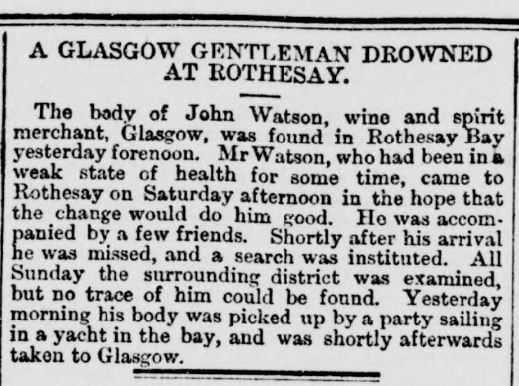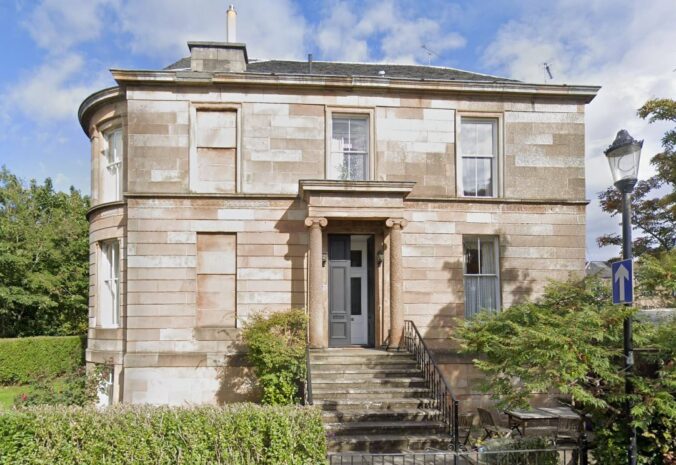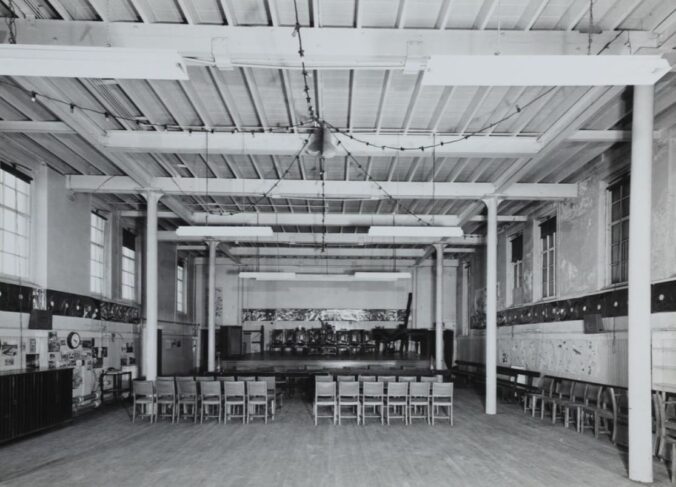52 Marywood Square sits on the corner of Moray Place, and for the first 50 years or so was known as 25 Moray Place, being a part of the third Victorian terrace, 18-25 Moray Place. It only “moved” to Marywood Square when the streets were renumbered around 1929.
John Watson
The first occupant, from 1875, was John Watson, of John Watson & Co, wholesale wine merchants, who moved from Garnethill. He had been born in Lanark, and married Henretta Rogers in Thirsk, Yorkshire in 1866. He had a warehouse at 14 Queen Street (the site was recently Next, now Deichmann, on Argyle & Queen Streets) and he was a regular importer of Geneva (Gin), red and white wine according to the Clyde Bill of Entry and Shipping List.
He suffered from ill health and in February 1877 took a trip to Rothesay with some friends in the hope it would help. He went missing, and his body was later recovered from the sea by a passing yacht. His illness was presumably depression, and his death suicide, though in classic Victorian style, no mention is made of this anywhere .

Account of John’s death, Glasgow Herald 20 Feb 1877. Source: BNA
Continue reading
Like this:
Like Loading...





Recent Comments